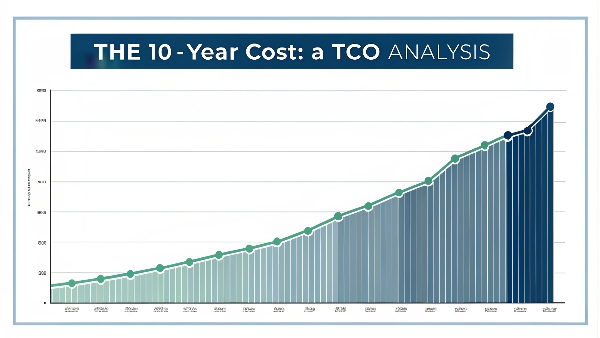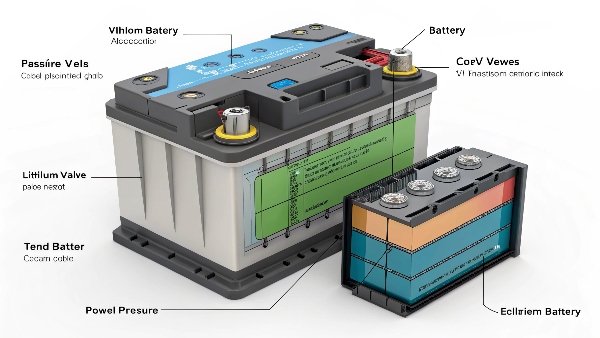Choosing a UPS battery seems complex. Traditional VRLA batteries are heavy and need frequent replacing. Lithium-ion offers a modern solution that lowers long-term costs and improves reliability.
Lithium-ion UPS systems are better for most modern uses. They are lighter, smaller, charge faster, and last up to 10 times longer than VRLA batteries. This significantly reduces the total cost of ownership and maintenance needs.

Transition Paragraph:
In my decade at Daopulse, we've manufactured both VRLA and lithium UPS systems for clients all over the world. I always tell procurement managers like Mr. Li that lithium and lead-acid batteries each have their own pros and cons. The choice really depends on your budget and usage environment. Sometimes, a UPS failure isn't even the battery's fault. A simple issue like a dusty, non-rotating fan can cause a shutdown. That's why understanding the whole system is so important. Let's break down the real differences to help you choose wisely.
Which is Better: Lithium-Ion Battery or VRLA Battery?
You are comparing battery options and see VRLA and lithium-ion. Choosing based on the upfront price alone can lead to much higher expenses and more headaches down the road.
For long-term value, lithium-ion is better. It offers a significantly lower Total Cost of Ownership (TCO) because of its much longer lifespan, higher efficiency, and zero maintenance. VRLA is cheaper to buy but costs more to own over time.

Dive deeper Paragraph:
VRLA stands for Valve-Regulated Lead-Acid. This is the sealed, "maintenance-free" version of a classic lead-acid battery. It's a proven technology and has a lower initial purchase price. This makes it attractive for projects with a tight upfront budget. However, that's where its advantages end. A VRLA battery typically lasts only 3-5 years. In a critical facility like a hospital, where Mr. Li works, that means planning for replacement service every 3 years. This involves labor costs, shipping costs for the heavy batteries, and disposal fees. In contrast, a lithium-ion (specifically LiFePO4) battery costs more upfront but lasts 8-10 years or even longer. Over a decade, you would buy one lithium battery, but you would have to buy, install, and dispose of two or three VRLA batteries. When you add up all those replacement costs, the lithium battery is actually the cheaper, smarter financial choice.
| Feature | VRLA (Lead-Acid) | Lithium-Ion (LiFePO4) |
|---|---|---|
| Initial Cost | Low | High |
| Lifespan | 3-5 Years | 8-10+ Years |
| Total Cost (10 Yrs) | High (due to replacements) | Low (one-time purchase) |
| Weight & Size | Heavy & Large | Light & Compact |
| Maintenance | None (but needs replacing) | None |
Which is Better for a UPS: Lithium or Lead-Acid Batteries?
A UPS is the critical last line of defense for your valuable equipment. But its reliability is completely dependent on the battery inside. An old or inefficient battery means your protection could fail.
For modern UPS applications, lithium is better. Its fast charging, small footprint, and stable performance make it ideal for data centers and critical systems. It handles frequent outages better and recovers faster than lead-acid.

Dive deeper Paragraph:
In the context of a UPS, lithium's advantages become even more obvious. First, there's the physical size. In a data center or network closet, rack space is expensive. A lithium UPS can be half the size and one-third the weight of a VRLA UPS with the same power rating. This frees up valuable space for more servers or network gear. Second is heat. Lead-acid batteries generate more heat when charging and discharging. In a room full of electronics, this adds to the overall heat load, making your air conditioning work harder and increasing your electricity bill. Lithium batteries run much cooler. This is also where simple maintenance comes in. As my insight mentioned, a UPS fan clogged with dust can cause overheating and failure. While lithium units run cooler, all electronics need good airflow. Regularly cleaning dust filters is a simple step that protects your entire investment. Finally, there's recharge speed. A lithium battery can recharge to 90% in 2-4 hours, while a VRLA can take over 10 hours. In an area with an unstable power grid, a fast recharge is essential to be ready for the next outage.
What Is the Main Benefit of Lithium-Ion Compared to Lead-Acid Batteries?
People talk about many lithium battery benefits. It's lighter, smaller, and charges faster. But focusing on all these details can hide the single most important advantage for your business.
The main benefit is its vastly superior cycle life, which leads to a dramatically lower total cost. A lithium battery can last 10 years and handle over 3,000 charge cycles, while a lead-acid battery lasts 3 years and around 300 cycles.

Dive deeper Paragraph:
Let's focus only on this one point: longevity. This is the number one reason our long-term partners are switching to lithium. Imagine you buy a VRLA UPS for $500. It works great for 3 years, then you have to replace it. Over a 10-year period, you will buy the unit three times. Your total cost is not $500; it's $1,500, plus the cost of an electrician to install the new units and the downtime risk during each replacement. Now, consider a lithium UPS that costs $1,100 upfront. It seems much more expensive. But it will last for the full 10 years. Your total cost over that decade is just $1,100. You install it once and you don't have to think about it again. For a system integrator managing hundreds of sites, eliminating that cycle of "rip and replace" is a huge operational and financial win. This "install and forget" reliability is the single biggest benefit that lithium technology brings to the table. It changes the battery from a consumable part into a long-term infrastructure asset.
Which is Better: Lithium or a Valve-Regulated Lead-Acid Battery?
The term "Valve-Regulated Lead-Acid" or "VRLA" sounds safe and modern. This term can make it seem like a closer competitor to lithium than it actually is for most applications.
Lithium is still better. "Valve-regulated" simply means the battery is sealed to prevent spills and manage gas during charging. It does not change the core chemistry, which is still heavier, shorter-lived, and less efficient than lithium-ion.

Dive deeper Paragraph:
Let's demystify this term. Before VRLA, lead-acid batteries were "flooded," meaning they had liquid acid and needed to be topped up with distilled water. They were messy and had to be kept upright. VRLA1 was a huge improvement. The valve system manages the internal gases, allowing the battery to be sealed and used in any orientation. This made lead-acid batteries much safer and suitable for use in offices and data centers. So, VRLA is a great innovation for lead-acid technology2. However, it's a generational leap behind lithium. The safety of a VRLA battery comes from a simple mechanical valve. The safety of a lithium battery comes from a sophisticated electronic brain called a Battery Management System (BMS)3. The BMS constantly monitors voltage, current, and temperature. It can actively prevent overcharging, deep discharging, or short circuits. It's an active, intelligent protection system, whereas the valve in a VRLA is a passive, mechanical one. So while VRLA is a reliable and mature technology, lithium represents a fundamental upgrade in performance, lifespan, and safety management.
Conclusion
Lithium offers a lower total cost, longer life, and better performance. While VRLA has a lower upfront price, lithium is the smarter long-term investment for most critical UPS applications.
-
Discover the advantages of VRLA technology, which revolutionized lead-acid batteries and improved their usability and safety. ↩
-
Explore the benefits of lead-acid technology to understand its role in battery evolution and its applications. ↩
-
Learn about BMS to see how it enhances lithium battery safety and performance, making it a crucial component in modern energy storage. ↩

